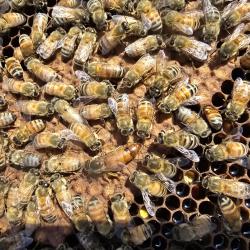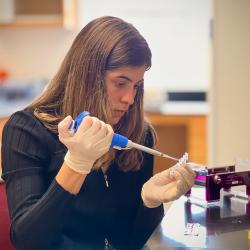Scientists Develop “Mosquito STD” to Combat Malaria
The researchers used a deadly fungus that spreads during mating to target mosquitoes that spread disease to humans.
A team of researchers including a University of Maryland entomologist has successfully turned the pesky mosquito’s sex life into its downfall. By creating what amounts to a sexually- transmitted disease specifically for mosquitoes, the scientists unveiled a potentially powerful new weapon in the global fight against malaria.

Published in the journal Scientific Reports earlier this year, the team’s study reveals how this innovative approach exploits mosquito mating behavior to deliver a deadly fungal infection to female mosquitoes—the ones responsible for biting and spreading disease to humans. The researchers’ invention could have wide-ranging implications for controlling malaria, which kills over 600,000 people annually, with children under five in sub-Saharan Africa bearing the heaviest burden. In recent years, progress in fighting malaria slowed as mosquitoes developed resistance to chemical treatments and mosquito-borne parasites become more resistant to antimalarial drugs.
“It’s essentially an arms race between the mosquitoes and us,” explained study co-author Raymond St. Leger, a Distinguished University Professor of Entomology at UMD. “Just as they keep adapting to what we create, we have to continuously develop new and creative ways to fight them.”
One reason combating mosquitoes—and the deadly diseases they can carry—is so difficult is due to how quickly the pests adapt to control methods. As traditional indoor mosquito repellents like bed nets or spraying improved in efficacy over time, mosquitoes learned to avoid them by heading outside and lying in wait to feed instead.
To target these hard-to-reach mosquitoes, the researchers engineered a naturally occurring fungus called Metarhizium to produce insect-specific neurotoxins that kill when injected into a female mosquito’s body. By spraying male mosquitoes with fungal spores, scientists could ensure the spread of the fungus to the female mosquitoes the males mated with. In tests conducted in Burkina Faso in West Africa, the team found that nearly 90% of the female mosquitoes died within two weeks after mating with males carrying the modified fungus, compared to only 4% mortality in the group without the modified fungus. Though the modified Metarhizium fungus is deadly to female mosquitoes, it is harmless to humans.
“What makes this fungus particularly promising is that it works with existing mosquito behavior rather than against their natural habits,” St. Leger said. “Unlike pesticides or other chemical control methods that mosquitoes can develop resistance to, this method uses the mosquitoes’ own biology to deliver the control agent.”
The researchers also observed that the male mosquitoes treated with the fungus transferred deadly fungal spores to female mosquitoes for up to 24 hours after initial exposure. Thus, male mosquitoes treated with the fungal strain could be released into the environment and continue spreading the fungus through multiple mating encounters.
“Interestingly, we noticed that the presence of the fungus did not deter female mosquitoes from mating with infected males. Mating rates stayed the same, which makes this fungus a very powerful mosquito population control tool,” St. Leger said. “And the fungus additionally made infected mosquitoes less able to sense insecticides, and much more susceptible to them, so it’s really a double blow against them.”
Researchers believe that the modified Metarhizium, a fungus that has widely been used for pest control of other insects in agricultural applications, could be a game changer in the fight against mosquitoes—especially when used in conjunction with more traditional methods. While challenges remain before this “mosquito STD” can be fully deployed at scale, St. Leger noted that the team’s invention represents a significant step forward in humanity’s age-old battle against mosquitoes—and the bites that spread disease.
“Mosquitoes are the world’s deadliest animal. It’s believed that they alone, by transmitting disease, have killed half of all human beings who have ever lived,” St. Leger noted. “Being able to eliminate mosquitoes quickly and effectively will save people all over the world.”
###
The study, “Transmission of transgenic mosquito-killing fungi during copulation,” was published in Scientific Reports on January 16, 2025.
In addition to St. Leger, UMD alum Brian Lovett (Ph.D. ’19, entomology) was also a co-author of the study.
This research was supported by the National Institutes of Health (Award No. RO1-AI106998). This article does not necessarily reflect the views of this organization.







